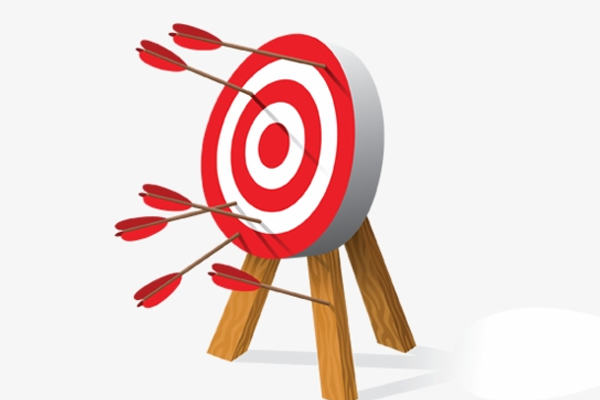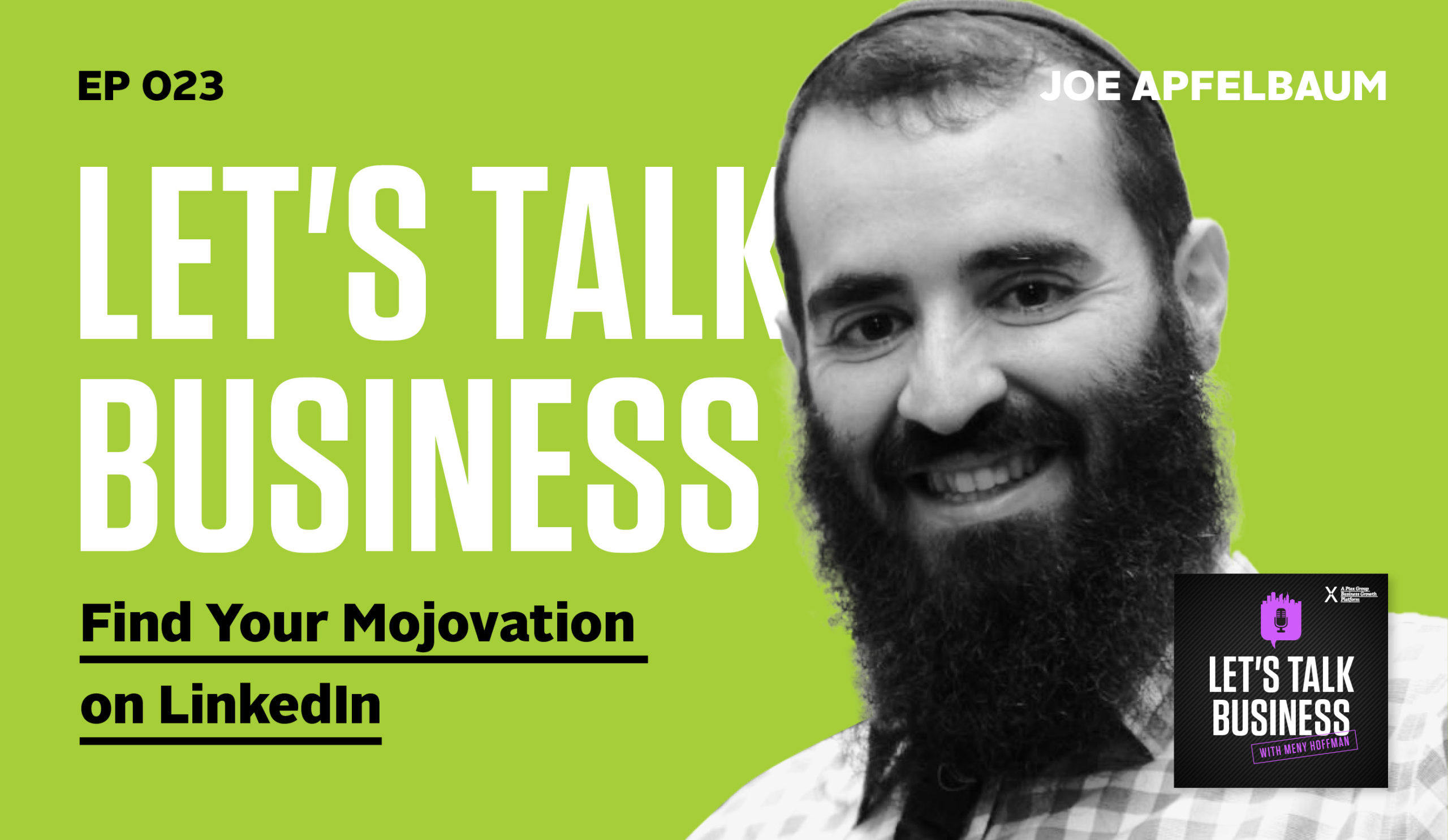Business coach Mostafa Hosseini joins Meny Hoffman in a discussion about how you can create and implement strategic marketing plans to help grow your business.
Your marketing plan is one of the most important plans you will ever develop. A well-thought-through and executed marketing plan can make or break your growth ambitions. Joining Meny Hoffman in this episode is a serial entrepreneur, speaker, and business coach Mostafa Hosseini. An expert in marketing, sales, business transformation, and strategic planning, Mostafa has been coaching and consulting entrepreneurs for over ten years, helping businesses in various niches and industries grow, scale, and become more profitable. Today, he shares how he helps coaches, consultants, and experts create and implement their one-page marketing plan in seven days or less.
Listen to the podcast here:
Download the audio file here.
How to Achieve Maximum Growth with a Simple Marketing Plan—with Mostafa Hosseini
My guest is Mostafa Hosseini. The staff is a serial entrepreneur, speaker and business coach. As an expert of marketing sales, business transformation and strategic planning, Mostafa has been coaching and consulting entrepreneurs for many years, helping businesses in various niches and industries grow and scale and become more profitable. We discuss the concept of one-page strategic marketing plan. “What are the biggest challenges for business owners when it comes to strategic marketing?” Also, “How do we prepare before you’re ready for marketing, understanding your industry and what questions you need to answer?”
In our interview, we also discussed some amazing factors and data about, “What is the key important piece to focus to grow your top-line revenue and why so many people ignore it and why you as a business owner need to create a system to go after that market.” We also discussed time management and how to create a proper to-do list with your priorities in order to be able to move the needle forward every single day. Without further ado here is my interview.
—
Mostafa, thank you so much for joining me on the show.
Thank you. It’s great to be here. Thanks for having me.
You and I have known each other for quite some time. We’re part of a mastermind together. Before we start, share with me a little bit of the experience of being part of a mastermind, what it does for you and to your business. People reading this, should they join a mastermind?
I love masterminds. It has made a massive impact on my business and my life. YI learned about the concept of the mastermind in Napoleon Hill’s Think and Grow Rich. It was chapter 2 or 3, one of the early chapters where he said, “The most powerful tool or tool that we have in our possession is our mind.” Our minds, when they come together, 1 plus 1 is not 2 anymore. It’s more like 4 or 5. Once our minds come together and we collaborate together and hang out with like-minded individuals and work on brainstorming and thinking about the possibilities and bouncing off ideas, it is the best thing anybody could do for their life or for their business. Back to your question of, “Should we join masterminds,” the answer is absolutely, yes.
[bctt tweet=”Don’t put all of your eggs in one basket. You need to have leads and business coming from multiple sources at any given time.” username=””]
I wanted to know that because I’ve spoken to people about masterminds and it’s interesting people that have never tasted a mastermind, the first thing they would say, “I wish I would have time for that. I wish I would have time to join a mastermind.” I always say, “You have time for things that are important.” As long as you say that, that means that at this point, you didn’t see the value of a mastermind enough to say that, “I’m going to make time for it.” I’ve seen what you do. We’ve had conversations. For our readers, let’s get a little bit into it. What is it that you do? Let’s discuss a little bit about your background first.
I specialize in helping coaches, consultants and experts create and implement their one-page marketing plan in three days or less. The problem that we solve is the fact that most business owners and entrepreneurs are poking around at different marketing ideas, tools, systems, processes, softwares, programs and you name it. They do that aimlessly without any plans, goals or directions. That causes a lot of frustration, anxiety, depression, confusion and all the bad feelings because of the fact that they face failure and setbacks on a daily basis. They’ve got their hands in twelve different things at the same time and nothing has working. What I do is I help them consolidate and simplify their knowledge and what needs to happen into a one-page plan that it could be used on a daily basis so that they can increase their chances of success and seeing results between 40% to 80%.
I liked what you said then for our readers is you see a little bit of common theme and how once upon a time a strategic marketing plan would be pages and pages and a pitch deck and same as with a business plan. Now, we’re moving to simplify things. The beauty of that is when you need to keep your finger on the pulse every single day, if that document is more than one page, it’s so hard to constantly check to see where how you’re doing. The simpler it is, the more you can keep the finger on the pulse. The more you keep the finger on the poles, the more you focus in ultimately making the change and making the moves that you need to do for your business, correct?
Absolutely. Those are marketing plans or business plans that are anything over 5 or 10 pages that people pay anywhere from $50,000, $100,000, multiple six figures for a plan. It is usually sitting somewhere collecting dust. How often can you go through a 50-page plan and checking on everything? Not very often that’s why people don’t use it. We want to make a tool that we use on a daily basis. Every single morning, checking on the goal on the strategies, on the KPIs, see where we are, what needs to happen today, this week, this month to help us reach our goal.
I want to ask you a question that I know that so many people reading this are thinking and not being able to ask the question but I’ll ask it for them, which is, you could speak to a lot of business owners and specifically smaller business owners, solo entrepreneurs, coaches, consultants. We ask them, “How do you get your business?” They’ll say, “Referrals. I’m so good, so my clients are refer-me business,” and they don’t have a one-page strategic marketing plan there. They’re just on the fly. They’re working it on the fly, getting those leads, reaching out to those leads, and signing up customers. What would be the answer to that? Why is a strategic marketing plan needed when you are filling up your time with referrals?
If things are working for you, it’s great. I’m a very big fan of referrals. I got a program called Viral Coefficient Formula, which is all about referrals. If one day people don’t refer to me or if the referrals dry up, I’m going to be in trouble. We don’t want to put all of our eggs in one basket. We need to have leads and business coming from multiple sources at any given time so if one dries up, the other ones we get business through.

What I’m learning is that regardless of how business is now, if you’re relying just on referrals, then ultimately, you’re not in control of what’s going to be happening tomorrow. If you have a strategic plan, that means you’re actively working towards it. The one thing I will add, which is that it’s okay that your strategic marketing plan is built around the referral program, which means is that you strategically built a referral program that you could have predictable leads coming in. There’s also a difference between referrals based on who knows what versus you have an active system at one point in the funnel and when you complete a project with a client, that you’re asking for the referrals and then follow up on the referrals. It’s more of a system versus what happens to be that somebody referred you to someone.
You should systematize your referral program, like you said, or automate the program and have it mapped out step by step so you know exactly what happens at every step so you can encourage more referrals. Viral Coefficient is the ratio that explains how many referrals you get from every new customer. Let’s say if each customer gives you two referrals, your viral coefficient ratio would be true. We want to make sure that we have systems in place and KPIs in place so that we can expand and grow exponentially through referrals. We have a plan in place that everyone understands all the team members know exactly what happens within the business and here is the plan and the process that we follow to make it happen.
What would you say are the biggest challenges business owners have is it obviously the creation of the making sure that the plan is sufficient and it has the proper strategy? That’s an important part, but what do you say when it comes to the marketing in general for a business is the harder part, the common gut where the strategy or the actual execution of the strategy?
Is it the strategy to have an issue with or their implementation?
Yes. Where’s the biggest bottleneck for business owners when it comes to marketing?
When it comes to marketing, the biggest bottleneck that I’ve seen is, number one, they don’t know what they want. They don’t have a clear set of goals. They don’t know exactly what they’re going after. The second bottleneck that I see is that they don’t know who their target market is and what they do for them. They have the approach of, “We serve everybody and anybody.” When you try to serve everybody, you end up serving nobody. They have a hard time finding customers. Those are the two biggest bottlenecks that I see working with business owners, even people that have been around for a while and have 6 or 7 figure businesses, they’re still not sure who they serve and what they’re going for.
Let’s dive in a little bit deeper into this. Somebody reading this is stuck at that stage. What is a system or process that a person could follow to try to come up with? Who is the target market and who are they serving?
If you complete the following sentence and the format of, I help X get Y, where X is your target market and Y is the result that you provide or the solution or the pain that you fix once you fix that and you’ve figured a statement out, that becomes the foundation of your marketing. I help this group of people fix this problem or get this result. For example, I help coaches and consultants create and implement their 1 to 2-page marketing plan in three days or less. Is it clear who I serve?
Absolutely.
Is it clear what the outcome is or what I do for them?
Sure.
Once it’s clear to me, then it becomes more clear and easier for other people. Once it’s clear about who I serve, then finding those people becomes a lot easier. What specifically I do for them, then that reduces or eliminates frustration and a lot of confusion around marketing.
What would you tell a person saying that, “If I look back at who my clients are, I’m servicing more than one demographic. I’m focusing more than one type of business. I’m solving more than one challenge?” How do you zoom in and get to that one sentence that you mentioned before?
In my experience, even if you offer multiple services, you can only be known for one service. You can only be the king or queen of one thing. What used to happen is you establish yourself as the king of, for example, search engine optimization. Once you bring clients in for SEO, you take care of them and then you say, “I’m the backend. Here are some other things that we could do for you.” I can’t go up in front of my potential customers, prospects or in the market and say, “I specialize in twelve different things.” They’re going to look at me and say, “I’m not sure if you’d be good at any single one of them.”
If you’re known for one thing and you become, for example, the king of search engine optimization for chiropractors, then I become known in America, in Canada as the King of SEO for chiropractors. Once they come in, then I say, “Mr. Chiropractor, it looks like you need website maintenance. It looks like you need Facebook ads. It looks like you need a whole bunch of other things that we can help you with these 4 or 5 items,” or whatever is on the list.
What are the different challenges businesses face once they sit down and try to do the one-page marketing plan outside of what we already discussed? When it comes to strategy, what would you say are the different pieces of that a person could prepare themselves if they want to build out a one-page strategic marketing plan?
What are the challenges when it comes to building the page?
[bctt tweet=”When you try to serve everybody, you end up serving nobody and having a hard time finding customers.” username=””]
Yes. What are the other pieces of information that the person needs to be clear with?
These are the six components that we cover on a one-page plan. Number one, their goal. We need to know exactly what we’re going for. Number two is the target market and our specialty. Number three is our offer. What exactly are we offering to these people? What is our offer journey map? We then need to set the strategies and the processes and systems for lead generation, lead conversion and client retention. Those are the six components.
What I like about that is that a lot of people miss the client retention part and it’s the biggest part. Otherwise, you could continue to bring in leads but ultimately, you’re not getting the lifetime value of the lead if you’re not focusing on the LTV, Lifetime Value, of a client.
Can I share some facts about retention?
Sure.
About 80% of your revenue will come from 20% of your existing customers. The cost of retention is 6 to 10 times cheaper than the cost of new lead generation. It’s a lot more profitable and it is between 50% to 70% easier to sell to an existing customer or to upsell to an existing customer versus convincing someone that doesn’t know me from a sack of potato to come to do business with me, sign up for my services and give me their money. A lot easier, a lot cheaper, faster, more profitable. I cannot say enough good things about client retention. In my experience, pretty close to 98% of business owners do nothing with client retention.
What would be the system strategy for client retention? Walk us through a typical client of yours. What would that look like? Is it follow-up? Is it knowing the upsells and the cross-selling? What would it be?
At a bare minimum to start with, we need to send out one email newsletter per month to the entire list. They hear from us, they know we exist. That’s the starting point. Some businesses do nothing because of the fact that emails are leveraged, that’s the fastest, easiest way to stay in touch. They see our name. The second thing and most profitable thing that I’ve done with retention is a round of calls to the entire list every quarter. We pick up the phone, call our existing customers or past customers or lost customers say, “It’s me. How’s it going? How’s life?” These are our most profitable phone calls. We have a good 20% to 30% conversion rates on these calls. 2 or 3 calls out of every 10 calls turns into new business or referral or a new lead of some sort versus if you’re doing cold calling. On cold calling, if you convert 1%, you’re doing good versus 20% or 30% with the existing list.
Also, by the time you speak to an existing customer, they already know, like, and trust you. It’s a matter of do they see value in what you’re offering them now or do they want the next step?
Can I add one more point?
Sure.
If you’re reading and you’re looking for cash within the next 2 or 3 days, literally pick up the phone and call your customers. This is not a sales-y approach. You just call them and say, “How things are going,” and where they’re at. You’d be surprised how many of them can get happy and thank you for calling them because one of the big objections that I get when it comes to calling customers, people say, “I don’t want to bother them.” That’s the biggest objection. In my mind, the way I respond to that is, “Think of it as calling your friends. When you’re calling your friends, you’re not bothering them.” That’s a relationship that you’re nurturing. Can I share another fact?

Sure.
You lose about 64% to 68% of your customers because of the fact that they perceive and think that you don’t care about them. Quite honestly, if you care about them, you would call them, you would stay in touch with them. Some people say, “They call me when they need me,” then you’re hurting yourself and you’re hurting your customers. Think about it this way. If you don’t call your friends or your best friends or even family members, they think that you don’t care about them. Let’s say you don’t call your best friend for three months and then after three months, she or he calls you and say, “Why haven’t you called me?” You say, “I didn’t want to bother you.” They say, “What kind of BS is that?”
Not only that. What I love about it is so many times we give ourselves the excuse that maybe the person on the phone should give it to us. If it is accurate and it’s true and we give out this excuse of why not to call, the answer is you got to call because you got a call. If that person is busy, they won’t pick up. If they’re busy or they don’t want to do business again, they’ll tell you or maybe they won’t tell you but they won’t pick up. It’s not an excuse not to call on the first place.
I want to emphasize this. This round of calls that you do with your list, it’s a very non-sales-y, non-threatening approach. It’s a nurturing approach. “How’s it going? Do you remember me? My name is Mostafa, I’m calling to say hi and see how things are going.” Most of the time they’re like, “Mostafa, thank you for calling. It’s good to hear from you.” Here’s what happens a lot of times they’re like, “I’ve been meaning to call you for the past six months but I’ve been busy. I want you to take care of this for me. I have a referral for you.” If that doesn’t happen, you could say, “Is there anything I could do for you?” They may say, “I want you to do this for me.” You can also ask for a referral. “Who do you know that may need our services? Do you know someone else that we can do business with?” If you don’t ask for a referral, you won’t get it as often.
I’ll just add one more thing. If somebody sends you a referral, don’t forget to say thank you. Many times we take it for granted, acknowledging that you got that lead and you had a conversation. I personally always try to give people that thank you even before something happened to that lead. If we spoke, it’s enough, even if we didn’t make business, because we’re showing appreciation for the gesture. It’s not about you got a customer. It’s because of the gesture, you either introduced me or gave somebody my contact.
You want to encourage that action by acknowledging what they’ve done so that you can nurture their behavior.
I want to shift gears. I know that your program, the Simple Time Management Formula, time management is something that we are always looking for innovative ways of how can we manage our time more efficiently. That’s the one thing I’m constantly looking at Fiverr to see if they’re already selling time but that’s the only thing that’s not available on the site. What could you share a cup of good no-nonsense advice for entrepreneurs that are looking to get the maximum productivity?
First thing you got to do is create a daily to-do list. I don’t know how people run a business without a to-do list. You’ve got to sit down and figure out, “Here’s what needs to happen now,” and prioritize your list. The first thing that we do with prioritization of the list is answering the following question. “Is this task or item on my list essential? Is it a must-do or is it nice-to-do? Is it a must-have or nice to have?” We only do the must-haves first. There’s a lot of non-essential items on our list. A good resource on that is the book Essentialism by Greg McKeown. It’s a great book. Another book that helps with this is The 80/20 Principle by Richard Koch. If you have a hard time understanding what the priorities are and what is essential and what is not essential, reading these two books will help you significantly with that. A to-do list, that is prioritized on a daily basis. That is my number one tip for time management.
I love that because I wanted to speak about the must-do and to-do, but I’m happy to hear that this is how you set up your to-do list because sometimes you’re going to speak to somebody entrepreneurial and say, “I do my to-do list but I never ended up getting to the important stuff.” The reason for it, because when you have a large to-do list, you are going to go for the easy ones versus the important ones. Either the urgent ones or the easy ones and not the important ones. When you go back on your list and say, “What is the must-dos,” the way that I do my must do is similar to what you said before but I’ll add, “If I will get this off my list, will this project able to be moved forward by other people?”
Let me get out of the way because I know that I’m the bottleneck for other people to continue with the project. That will also sometimes be part of my must-do list because if not, those other people can continue doing what they need to do. To give an example, I had to review some reports. I know that the person doing reports needs to finish reports by the end of the week but they’re waiting for some questions. Even if it’s a fifteen-minute task for me but it got on my must-do list because I know that I’m the bottleneck for somebody else’s productivity.
One more thing that we do every week on top of your daily to-do list is every Monday morning, we do our management team meeting. On Monday, we determine the projects, the tasks, and the sprints for the week and determine what are the priorities on a prioritization matrix that we do. We have a main to-do list. On that, we determine what is essential or not, then we bring over all the essentials. We prioritize the essentials so that the highest priority gets done first. We have an Excel sheet for this and we do not get to the second item until the highest priority is finished. It’s like mountains off of our shoulders when we do this. Everyone in the company knows, “Here are the priorities.” Once we get off track and if we get off track, we look at the list of priorities based on the order of importance and we go right back to getting things done.
Do you have any resources on what we’re discussing for our audience?
Can I share simple marketing formula, which we talk about a lot of priorities or would it be better if sharing other resources?
Whatever you feel will get people to move the needle forward.
[bctt tweet=”The cost of retention is six to ten times cheaper than the cost of new lead generation.” username=””]
I’m known for the one-page plan, let me stick to my message. My course Simple Marketing Formula happens over a three-day weekend, Friday, Saturday, Sunday or the days may vary depending on the day in the month. We work together to build your one-page marketing plan. We work in a live environment. We were together. We mastermind and it’s so much easier to bounce off ideas, get ideas, test ideas and sharpen your marketing message, simplify and consolidate everything into a one-page plan in three days. On Sunday, you walk out with your plan completed that you can start implementing right away. Some people that attend our course start seeing results in the class.
Remember the formula that I shared for the target market formula? I help X get Y. We’ve had students that once they figured that piece out, they updated their social media tag lines. That very day, they got new leads. They came back on Saturday or Sunday like, “Mostafa, I found new customers because I put my tagline out there.” Yes. Sometimes you start seeing results during the class or immediately after. I would love to have you there. I’ll share the link here with you, Meny, so you could join us. We’re all practically giving it away.
Let’s close with the four rapid-fire questions. Are you ready?
Yes.
Number one, a book that changed your life?

Working With The Law by Raymond Holliwell.
Number two, a piece of advice you got that you’ll never forget?
Provide more value than you get money for.
Number three, anything you wish you could go back and do differently?
I would get married at 22 or 23.
Number four and the final question. What’s still on your bucket list to achieve?
I’d love to visit the Pyramids in Egypt.
I had some friends that were there and thinking, “I hope travel will be back soon and we’ll be able to visit the beautiful world again.” Mostafa, thank you so much for joining us. I know your time is valuable. That is why in the name of our readers, we will forever be grateful for sharing some of your time with us.
Thank you for having me. I appreciate that. Thank you very much.
My pleasure.
Important Links:
- Mostafa Hosseini
- Think and Grow Rich
- Simple Time Management Formula
- Essentialism
- The 80/20 Principle
- Simple Marketing Formula
- Working With The Law
- https://www.Facebook.com/sbmh2001
About Mostafa Hosseini
 Mostafa Hosseini is a serial entrepreneur, speaker, and business coach. As an expert of marketing, sales, business transformation, and strategic planning, Mostafa has been coaching and consulting entrepreneurs for over 10 years, helping businesses in various niches and industries grow and scale and become more profitable.
Mostafa Hosseini is a serial entrepreneur, speaker, and business coach. As an expert of marketing, sales, business transformation, and strategic planning, Mostafa has been coaching and consulting entrepreneurs for over 10 years, helping businesses in various niches and industries grow and scale and become more profitable.
He is also the host of the Daily Confidence for Entrepreneurs Podcast and creator of the Simple Marketing Formula.








